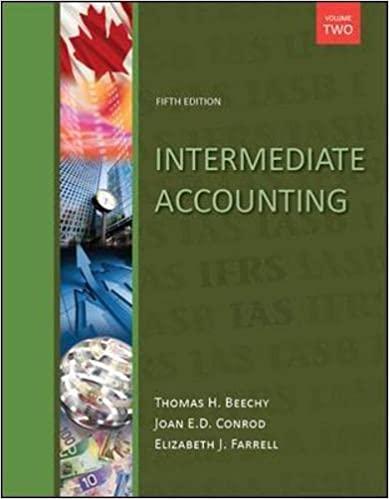Agnew Corporation started operations in (20 X 1). The company acquired equipment in the first year for
Question:
Agnew Corporation started operations in \(20 X 1\). The company acquired equipment in the first year for a price of \(\$ 90,000\). The equipment will be depreciated for accounting purposes over three years on a straight-line basis (with a full year's depreciation in the year of acquisition). For determining income tax payable, the company can deduct one-half of the purchase cost as CCA in the first year, one-third in the second year, and one-sixth in the third year.
The company's 20X1 startup was successful, and in 20X2 the company bought identical equipment for \(\$ 96,000\). In \(20 \mathrm{X} 3\), a third set of equipment was acquired for \(\$ 99,000\). The pattern of depreciation and CCA is proportionately the same for each acquisition. Agnew's tax rate is \(30 \%\). The company's management plans to continue the same level of investment for the foreseeable future, as long as the company remains profitable.
Required:
1. Determine the temporary difference relating to the tax versus accounting bases of the equipment (that is, CCA versus accounting depreciation) for each of \(20 \times 1\) through \(20 \times 3\). What is the accumulated balance of the temporary difference at the end of each year?
2. What is the balance of the deferred income tax account at the end of each year?
3. What will happen to the accumulated temporary differences and deferred income tax if Agnew continues to maintain its current level of investment in equipment, replacing each asset as it comes to the end of its useful life?
4. What conditions will be necessary to cause the timing difference balance to decline in future years?
5. Under what conditions will reversal of the accumulated timing differences cause a cash outflow?
Step by Step Answer:






